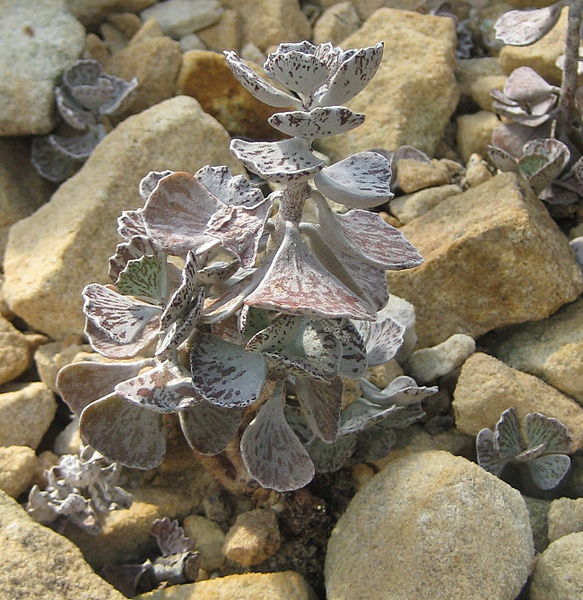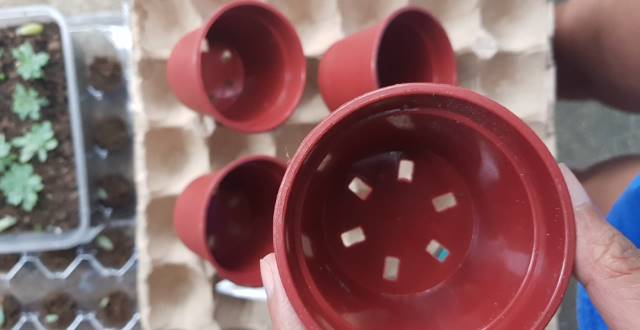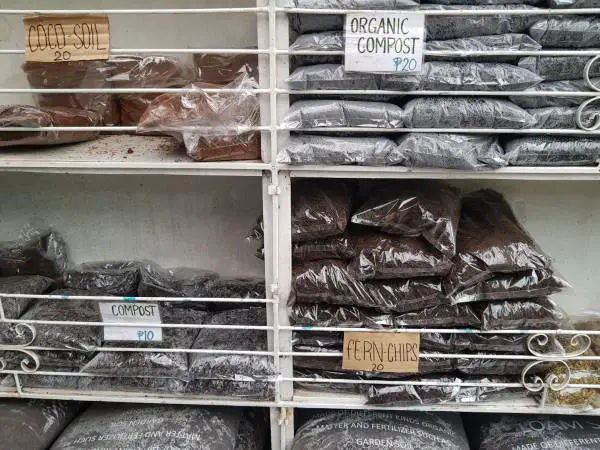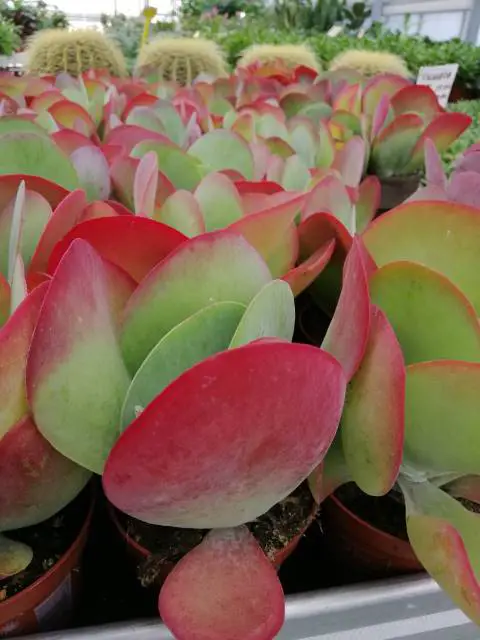Kalanchoe rhombopilosa is a beautiful and unique succulent that looks like a precious stone or a silver butterfly. It is an herbaceous, perennial succulent that belongs to the family Crassulaceae. A big plus side of Kalanchoe rhombopilosa is that it doesn’t grow too large, therefore it doesn’t occupy a lot of space. It looks like an absolute jewel in the pots adding great value to the home and succulent gardens.
Common Name: Pies from Heaven
Origin and Habitat
Kalanchoe rhombopilosa is endemic to southwest Itampolo, Madagascar (an island country lying off the southeastern coast of Africa). It grows wild in the Rocky Mountains and dry soils of Madagascar. This Kalanchoe species was first described by Mannoni and Boiteau in 1947.

How does Kalanchoe rhombopilosa look like?
It is an attractive succulent that grows up to 12 inches (30 cm) in height. The stems are thin, woody, upright, with long hairs. The leaves are fleshy, silver-green, slightly woolly, with brown markings. This succulent gives off small greenish-yellow to pink flowers with purple lines that appear in the spring season.

Is Kalanchoe rhombopilosa an outdoor or indoor succulent?
Kalanchoe rhombopilosa can be grown both outdoors and indoors depending upon the temperature and light requirements. It can be grown outdoors in containers during the summer season and as an indoor succulent during the winter season.
How to Grow and Care for Kalanchoe rhombopilosa?
Here I will share with you a detailed guide on how to grow and care for Kalanchoe rhombopilosa.
Light requirements
Kalanchoe rhombopilosa loves to grow in bright sunlight. Outdoor succulents can be planted in full bright sun to partial shade.
Where should I keep Kalanchoe rhombopilosa?
In areas where the summer is extremely hot, and the sunlight is too intense they should be planted in partial shade.

Indoor succulents should be kept near a bright sunny window for ample sunlight exposure. In winter keep your Kalanchoe succulents near a south-facing window, while in summer season move them near east or west-facing windows. Avoid direct contact with the windows during the summer season, when the sun is too intense it may cause the burning or scorching of the leaves.
Note: If your succulents start growing too tall or appear leggy or stretched out, it is an indication that it is not getting enough sunlight. If you experience this situation, move your indoor succulent near a bright sunny window.
What to do with a leggy or stretched out Kalanchoe?
Can i use grow lights for Kalanchoe succulents?
Which grow lights are good for Kalanchoe rhombopilosa?
Make sure you maintain 6 to 12 inches distance from fluorescent tube lights and bulbs and 18 to 24 inches from LED bulbs.
Potting soil
Kalanchoe rhombopilosa requires a well-draining potting mix. You can use a special cactus mix or a succulent soil mix readily available in the market or prepare a potting mix at your own by mixing 40 to 50% grit (perlite and sand) with peat moss.
Coarse sand and perlite improve the drainage and aeration of the potting medium by increasing the soil porosity. A well-draining potting soil will not retain the moisture and prevent the roots from rot.
What type of potting medium should be avoided?
Avoid the use of a potting medium that is too clayey. The clayey soil will not have enough porosity to let the excess water drain out and it will ultimately lead to water build up in the potting medium, causing root rot and decay.
Should I put rocks at the bottom of the container?
It is not necessary to put rocks at the bottom of the containers. Generally, a single rock to cover the drainage hole is sufficient, to prevent the soil from leaching out of the bottom. Putting rocks in the containers doesn’t improve drainage or air circulation.
Temperature requirements
Kalanchoe rhombopilosa grows well at a temperature of above 45 Fahrenheit temperature. It can be easily grown as an outdoor succulent in areas where the temperature is warm.
Kalanchoe rhombopilosa cannot survive freezing temperatures. Below freezing temperature will cause frost injury and death in no time.
How to save the succulents from frost injury?
If there is a risk of frost it is better to bring the potted plants indoors and place in a sunny windowsill or under artificial grow lights. If the succulents are grown in the garden soil it is better to cover them with frost clothes to protect from freezing weather. It has been reported that even a few hours of exposure to below freezing temperatures is enough to kill the succulents.
Water requirements
Kalanchoe rhombopilosa is a drought-tolerant succulent and it can tolerate a period of neglect. The watering needs vary with the seasonal temperatures. Kalanchoe rhombopilosa needs moderate irrigation in the autumn and spring seasons, while during summer they need to be irrigated more frequently. In the summer season, the evaporation rate is very high due to the hot weather, and the water is lost at a rapid rate from the soil. During winter the succulents need occasional watering, therefore, irrigate only if the plants start shriveling.
Water well and let it drain out of the drainage hole. Then wait for the soil to dry out completely before applying the next irrigation.
How to know when to water your succulents?
Insert your finger in the soil if the top 1 to 2 inches are completely dry, it is the right time to water. Though these succulents can survive a period of drought but do not neglect them for a long time. Water the succulents well as soon as the soil dries out to ensure their healthy growth.
Overwatering is the most commonly occurring problem causing the death of the succulents. Excess of water causes rotting and decay of the roots; it also encourages fungal growth.
Can I use spray bottles to water Kalanchoe rhombopilosa?
Avoid using spray bottles. The most common watering mistake is that you water your Kalanchoe succulents by spraying water on leaves. This method only works for propagating new Kalanchoe succulents. In mature plants, it is the root system that absorbs water and nutrition for the succulent. Water the soil directly near the root zone using water bottles or cans for better water utilization efficiency.

Another disadvantage of using spray bottles is that the water stays on the leaves and can cause rotting.
What is the right time to water Kalanchoe rhombopilosa?
The best time to water is in the morning. Avoid watering your Kalanchoe succulents at noon or in the afternoon. Don’t water when the weather is too humid or extremely hot.
How to water Kalanchoe succulents in the pots without drainage holes?
If you are using pots without drainage holes, it is recommended to water your succulents sparingly. After a few minutes tip the container sideways and let the excess water drain out. Water slowly so that the water gets evenly distributed in the soil without pooling at the bottom of the container.
Humidity
All varieties of Kalanchoe succulents can generally take all levels of humidity. The only thing that varies with the humidity is their watering needs. If the humidity is very high, the succulents need less water, while at low humidity they may need water more often. Though humidity does not impact the overall plant growth directly, however, high humidity can likely encourage the fungal growth on the succulents. Generally, the humidity at room temperature is just fine for the growth of Kalanchoe rhombopilosa.
Fertilization
Fertilization is always a fun thing for enthusiast gardeners who want to make their plants grow luxuriantly. Though Kalanchoe rhombopilosa gets plenty of nutrition from the potting medium, it can be benefited from a moderate dose of some extra nutrients.
How to fertilize Kalanchoe rhombopilosa?
It is recommended to fertilize your succulents during the active growing phase biweekly or monthly with a light dose of manufacturer’s recommended 20:8:20 cactus fertilizer or succulent fertilizer mix. Avoid feeding your succulents when they are in the dormant phase.
These succulents don’t need a lot of nutrients so, avoid the overdose of fertilizers.
Can I use coffee grounds, eggshells, and banana peels to fertilize Kalanchoe rhombopilosa?
As the coffee grounds easily break down in the soil, they will add nitrogen to the potting medium. Nitrogen is a vital nutrient for Kalanchoe succulents. Coffee grounds will also help to improve soil aeration and drainage. Coffee grounds may even suppress pests and weeds.
Eggshells can be used in succulent gardens. You can use the eggshell tea to give an added dose of calcium to the Kalanchoe succulents. Eggshells will also give them an extra dose of potassium.
Banana peels are good for Kalanchoe succulents. They contain essential minerals that are beneficial for your succulents. They are not only a rich source of potassium and phosphorus, but they also contain some other elements like calcium, sodium manganese, and sulfur.
How to propagate Kalanchoe rhombopilosa
Kalanchoe rhombopilosa can be propagated by leaf and stem cuttings.
To take the cuttings use a clean sharp scissor or gardening shears. Gently cut the plant part you want to propagate. Let the cutting sit at a warm dry place for 2 to 3 days. It will allow the cuttings to develop callous at the cut ends.
Fill the containers (in which you wish to propagate the succulents) with a standard succulent mix. Place the cuttings at the top of the pre-moistened potting soil (a mix of sand, perlite, and peat moss). Keep misting the cuttings regularly 5 to 6 times a day and also keep the soil evenly moist.
The cuttings need more water until they establish in the soil. But do not overwater it will rot the cuttings.

Put the pots near a window with indirect sunlight. Avoid exposure to bright direct sunlight until the succulents are established in the soil. The succulents will start rooting after 2 to 3 weeks and will be ready to transplant into new containers.
How often to repot Kalanchoe rhombopilosa?
Kalanchoe rhombopilosa does not require frequent repotting. It can thrive well in the same container for years. However, a general rule is to repot all Kalanchoe succulents every 2 years, it will provide a fertile potting medium to the succulents with plenty of nutrients. Even if your Kalanchoe has completed 2 years in the same container and is growing healthy still it is recommended to repot into new containers.
It is also recommended to repot in certain other conditions, for example, when the potting medium and the containers have poor drainage, the succulent is infested by insect pests or diseases, and when the container is too small for the succulent to grow and spread. It is also advised to repot every time you buy a new succulent from the market.
Does Kalanchoe rhombopilosa need pruning?
Kalanchoe rhombopilosa is a dainty succulent that does not grow too tall, therefore, it does not need pruning. However, pruning to remove the spent blooms and dead leaves can encourage more blooming and healthy growth in the next growing season. Just take a clean scissor and snip off the spent blooms and dead leaves gently. Make sure you don’t injure any other part of the succulent. Pruning will also make your succulent look well-organized, neat, and tidy.
How to make Kalanchoe rhombopilosa bloom again?
Keep the succulent at a warm location and away from drafts. Stop watering and fertilization for 6 weeks. Give your succulents 14 hours of dark and 10 hours of bright light for 6 weeks before the blooming season. As soon as you see the flower buds coming out, shift the plant to bright lighting, and resume regular watering. Feed the succulents in the spring seasons and remove the spent blooms to encourage the bud development in the next season.
Is Kalanchoe rhombopilosa poisonous?
Generally, all Kalanchoe succulents are toxic to pet animals, birds, and livestock. They must be kept out of the reach of toddlers because they can cause stomach upset.
Kalanchoe succulents contain cardiac glycosides that are toxic to pet animals. If you are keeping pets at home, it is advised to keep the succulents away from cats and dogs because if they eat up any plant part it can lead to serious consequences. The pets will start developing several symptoms after ingestion such as diarrhea, vomiting, change in heart rate and rhythm, stomach upset or pain, and excessive slobbering.
Kalanchoe succulents contain cardiac glycosides that are toxic to pet animals. If you are keeping pets at home, it is advised to keep the succulents away from cats and dogs because if they eat up any plant part it can lead to serious consequences. The pets will start developing several symptoms after ingestion such as diarrhea, vomiting, change in heart rate and rhythm, stomach upset or pain, and excessive slobbering.
Always make sure you choose the right sized pot to grow your Kalanchoe succulents.
What are the problems of Kalanchoe rhombopilosa?
Kalanchoe rhombopilosa is quite tolerant to insect pests. Mealybugs and aphids can be occasionally observed attacking the indoor plants. However, these insects are not a very big problem. You can control the infestation easily if you are lucky enough to spot the problem at an early stage.
How to control insect pests?
It is recommended to use 70 % isopropyl alcohol or neem oil spray to get rid of these tiny bugs. The stems and leaves of the succulent should be rubbed with isopropyl alcohol to keep the bugs away. If the infestation is very severe, you can use a non-toxic insecticide spray.
Another big problem with all Kalanchoe succulents is overwatering. You may experience this problem if you have accidentally ended up overwatering your kalanchoe succulent. Overwatering increases the chances of fungal diseases. Therefore, optimize the use of water to save your succulents from the havocs of overwatering.
Can I keep Kalanchoe rhombopilosa in Terrace?
Can I keep my Kalanchoe rhombopilosa in the garden?
Why do the leaves of Kalanchoe rhombopilosa turn yellow?
Which succulents can be planted together with Kalanchoe rhombopilosa?
Can I keep Kalanchoe rhombopilosa in a hanging basket?
I hope this care guide will help you solve all your gardening problems. Do write to us if you have any questions or queries about this amazing succulent.
Enjoy a great gardening experience.
Featured Photo Credit: Michael Wolf / CC BY-SA




